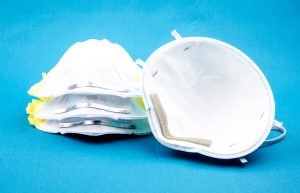Keeping Healthcare Workers Safe with Respiratory Protection
March 12, 2020
With emerging confirmed cases of a respiratory disease caused by a new strain of the coronavirus (abbreviated “COVID-19”) in multiple states in the US, many are searching for resources to stay healthy. According to the Centers for Disease Control and Prevention (CDC), cases currently indicate person-to-person spread. There is no current vaccine to protect against COVID-19 or medications approved to treat. In light of this, below are some helpful tips on how to prevent the spread of this disease to your employees. We also offer more detailed information below on ways S&ME can support Respiratory Protection Program needs for workplace environments with increased risk of exposure.
Five Tips to Prevent the Spread of Respiratory Diseases in Workplaces
- Wash your hands often with soap and water for at least 20 seconds – especially after using the restroom, before eating, and after blowing your nose, coughing, or sneezing
- Avoid contact with sick people and stay home when you are sick
- Avoid touching your face – including your eyes, nose, and mouth
- Cover a cough or sneeze with a tissue and dispose of it
- Clean and disinfect objects and spaces you touch frequently
Respiratory Protection Programs for Healthcare Workers
We acknowledge and appreciate the many healthcare employees caring for current patients.
During this current communicable disease outbreak, the CDC recommends healthcare employees utilize a N-95 respirator (pictured below). Additionally, the Occupational Safety and Health Administration (OSHA) requires fit testing for all tight-fitting positive and negative pressure respirators, such as the N-95 disposable respirator.

N-95 Medical Respirator
A fit test refers to a testing method to qualitatively or quantitatively evaluate the fit of a respirator on an individual. More specifically, qualitative fit testing (QLFT) is a pass/fail fit test to assess the adequacy of respirator fit that relies on the individual’s response to the test agent. Quantitative fit testing (QNFT) is an assessment of the adequacy of respirator fit by numerically measuring the amount of leakage into the respirator with an ambient particle counting device. Fit testing must be completed in conjunction with the establishment and maintenance of an OSHA-compliant respiratory protection program. Find more information on OSHA’s Respiratory Protection Standard (29 CFR 1910.134) here.
How Can S&ME Help Meet Your Respiratory Program Protection Needs?
Within our Occupational Health and Safety services, we have the versatility to meet a range of specific needs related to the aforementioned OSHA Respiratory Protection Standard including:
- Guidance on OSHA requirements
- Respiratory Protection Program Development
- Respiratory Protection Training
- Quantitative or Qualitative Fit Testing
- Annual review and/or update of the program
For more information on respiratory program services, fit testing, program implementation, or training needs please reach out to Chris Murray, CIH, CSP at cbmurray@smeinc.com.
